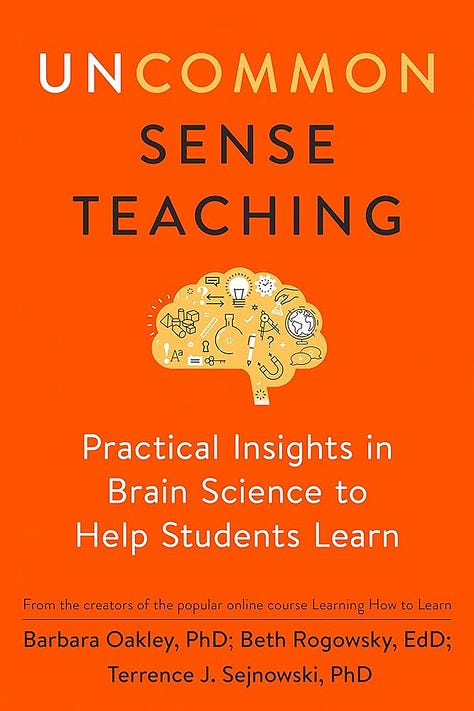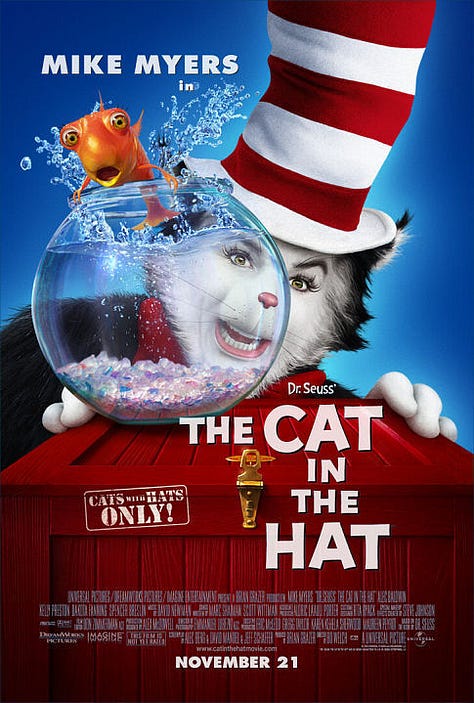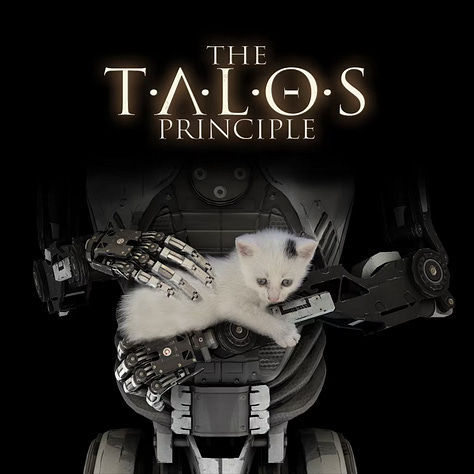Navigating the Social Maze with Game Theory
Exploring the Balance Between Morality and Strategy in Our Daily Interactions

Think about the last time you had to choose between being brutally honest or a bit more diplomatic with a friend. Or consider those times when you had to decide whether to compete for recognition or collaborate for the team's success. Maybe you recall a situation in your family where forgiving seemed harder than holding onto a grudge. These aren't just fleeting choices; they reflect the delicate balance we all strike between sticking to our moral principles and navigating the practical realities of life. They raise an intriguing question: is there a 'best approach' to these interactions, one that blends moral integrity with practical success?
Let’s play a game.
Picture this: a banker with a chest of gold coins presents you and another unknown player with a unique opportunity. The rules are simple yet intriguing. You both have two choices: to cooperate or to defect.
Here's how it plays out:
If both of you cooperate, you each earn three coins.
If one cooperates but the other defects, the defector receives five coins, leaving the cooperator with nothing.
And if both of you defect, you each get only one coin.
The goal? To accumulate as many coins as possible. You are never going to interact with the stranger again. What would you do?
The dilemma? Regardless of your opponent's choice, your best option seems to be defecting. However, if both players act on this rationale and defect, they end up with just one coin each – a suboptimal outcome compared to the three coins they would have received if both had cooperated, which is also what I expect this poll to reflect.
This game is a modern twist on the classic prisoner's dilemma, encapsulating a fundamental conflict between individual gain and mutual benefit. The experiment by Axelrod and Hamilton brought this scenario to life. They invited top scientists/mathematicians to submit computer programs to play this exact game with each other for around 200 rounds. Various strategies were competing. These strategies, range from consistent cooperation to perpetual defection and more dynamic approaches.
The strategies tested in the game – whether to cooperate, defect, or something in between – are not just moves in a computer simulation. They closely resemble the choices we make every day in our interactions with others.
Think about it: in our professional lives, we often encounter situations where we must decide whether to collaborate or compete with colleagues. In personal relationships, we face the dilemma of whether to forgive and cooperate or to retaliate and defect in response to conflicts. Each choice carries its own set of consequences and rewards, much like the outcomes in the simulated game.
Guess who came to the top?
A Closer Look at the Strategies
Before we dive into the results, let's explore some of the strategies that were part of Axelrod and Hamilton's experiment. These strategies, varying in their approach to the cooperation-defection dilemma, offer a glimpse into the diverse tactics one can employ in social interactions.
Always Cooperate: As the name suggests, this strategy involved unswerving cooperation, regardless of the opponent's actions.
Always Defect: The opposite of Always Cooperate, this strategy was based on perpetual defection, prioritizing self-gain over mutual benefit.
Tit for Tat: This strategy started with cooperation and then simply mirrored the opponent's previous action in the next round. If the opponent cooperated, Tit for Tat would cooperate in the following round; if the opponent defected, it would retaliate by defecting in the next interaction.
Grudger: A strategy where cooperation is the norm until the opponent defects. Once the opponent defects, Grudger holds a grudge and defects for all subsequent rounds.
Random: This strategy made choices unpredictably, without any consistent pattern, cooperating or defecting at random.
These strategies, among others, were put to the test in the simulation. They were broadly divided in the spectrum from nasty to nice. They represent a range of behaviors we often see in real-world scenarios, from unwavering trust to consistent self-interest, from retaliation to random behavior.

Revelation of the Results
When the results came in, they were intriguing. The top eight performing strategies in the tournament were primarily those characterized by 'niceness' – strategies that focused on cooperation. One standout was "Tit for Tat," which, despite its simplicity, came in first and proved to be exceptionally effective.
Why did 'niceness' prevail?
A key aspect of this experiment was the repetition of interactions.
Unlike a one-off game where defecting might seem the best strategy (as a hypothetical poll would likely reflect), repeated interactions change the dynamics significantly. In a single play, two rational individuals might both defect, leading to a worse outcome for both. However, when the game is played repeatedly, as in the experiment, strategies that fostered cooperation, even if they retaliated, led to better long-term outcomes. This repetition mirrors real life, where our interactions aren't isolated events but part of a continual relationship, influencing future interactions.
In essence, the success of cooperative strategies in the experiment suggests that in real-life scenarios, where we repeatedly interact with the same individuals, being nice, forgiving, and clear can lead to more beneficial outcomes. This insight offers a profound lesson on the power of positive, cooperative behavior in achieving long-term success and harmony in our social and professional lives.
The Second Tournament: Adaptation and Strategy
For the second iteration of the experiment, Axelrod received 62 new entries, along with his own inclusion of a 'Random' strategy. This time, participants were armed with the results and analysis from the first tournament, allowing them to refine their strategies with this newfound knowledge.
There were two major camps. The first camp, recognizing the success of 'nice' and forgiving strategies in the first tournament, submitted similar strategies.
The second camp, anticipating an environment of increased niceness and forgiveness, submitted strategies that were nastier, aiming to exploit the forgiving nature of others.
Despite these adaptations, the results were consistent with the first tournament: nastiness did not pay off. "Tit for Tat" again emerged as the most effective strategy, and overall, nice strategies dominated the top ranks. In the top 15, only one was not nice, and conversely, in the bottom 15, only one was not nasty.
Key Takeaways from the Tournaments

The analysis of the tournaments by Axelrod yielded four crucial characteristics of successful strategies. Each of these traits is not only effective in the game but also offers valuable insights for real-world interactions:
Niceness: A strategy is nice if it is not the first to defect. In the tournaments, nice strategies tended to perform better. In life, this translates to the idea of not being the one to initiate conflict or hostility. Being nice fosters trust and cooperation, creating a positive cycle of interactions in personal and professional relationships.
Forgiveness: Successful strategies were forgiving, meaning they returned to cooperating after an opponent defected but then cooperated again. Forgiveness in the game prevented long-standing feuds and allowed for recovery from misunderstandings or mistakes. Similarly, in real life, the ability to forgive and move on from conflicts can repair relationships and maintain harmony.
Retaliation: Effective strategies were also retaliatory, quickly responding to defection with defection. This quality ensured that strategies were not exploited. In real-world terms, this translates to the idea of standing up for oneself and not allowing others to take advantage of one's goodwill. It's about setting boundaries and ensuring mutual respect in interactions.
Clarity: Lastly, successful strategies were clear and predictable in their behavior. This predictability allowed other strategies to adapt and respond appropriately, leading to more stable interactions. In life, being clear and consistent in actions and communication helps in building trust and understanding, as others know what to expect and can interact accordingly.
These four characteristics – niceness, forgiveness, retaliation, and clarity – though derived from a computer simulation, provide interesting insights into human behavior and social dynamics. They suggest that success and harmony in our interactions, whether on a personal or professional level, can be achieved by balancing kindness with assertiveness, being forgiving yet not naive, and maintaining clear and consistent communication.
What should this mean to you?
Think about a typical day in your life, filled with various interactions, decisions, and relationships. Now, imagine if each of these encounters was a one-time event, a singular game with no future consequences. In such a world, short-term gains and self-centered strategies might reign supreme. But, as the insightful experiments of Axelrod and Hamilton demonstrate, our real world is vastly different. Our lives are a series of ongoing interactions, an endless chain of give and take.
In this continuous game of life, the strategies that emerge victorious are those that balance niceness with wisdom. Being cooperative and forgiving, yet smart enough to protect oneself from being taken advantage of, is not just a moral stance; it's a practical strategy for long-term success. This approach mirrors how we navigate relationships at work, in our families, and in our broader communities. Quick gains achieved through selfishness might work in the short run, but it's the repeated, consistent actions that build our reputations and define our relationships.
The real lesson from these game theory experiments is extremely relatable: our everyday interactions are not isolated moments but links in a longer chain. By being 'nice but not naive,' we not only contribute to a more cooperative and harmonious environment but also set ourselves up for sustainable success. It's a reminder that in the complex web of our social world, kindness paired with astuteness isn't just commendable—it's a powerful strategy for a fulfilling life.
As we continue to play this ongoing game of life, these principles guide us toward more meaningful and rewarding connections, painting a hopeful picture of a society where collective well-being and individual success coexist in harmony.
This post is heavily inspired by the game ‘Evolution of Trust’ by Nicky Case, please check out the game here - https://ncase.me/trust)
Monthly Recap - (Notion Link)









References
Axelrod, R., & Hamilton, W. D. (1981). The evolution of cooperation. Science, 211(4489), 1390–1396. - The Evolution of Cooperation
The Evolution of Trust - https://ncase.me/trust/
What Game Theory Reveals About Life, The Universe, and Everything - Veritaserum

